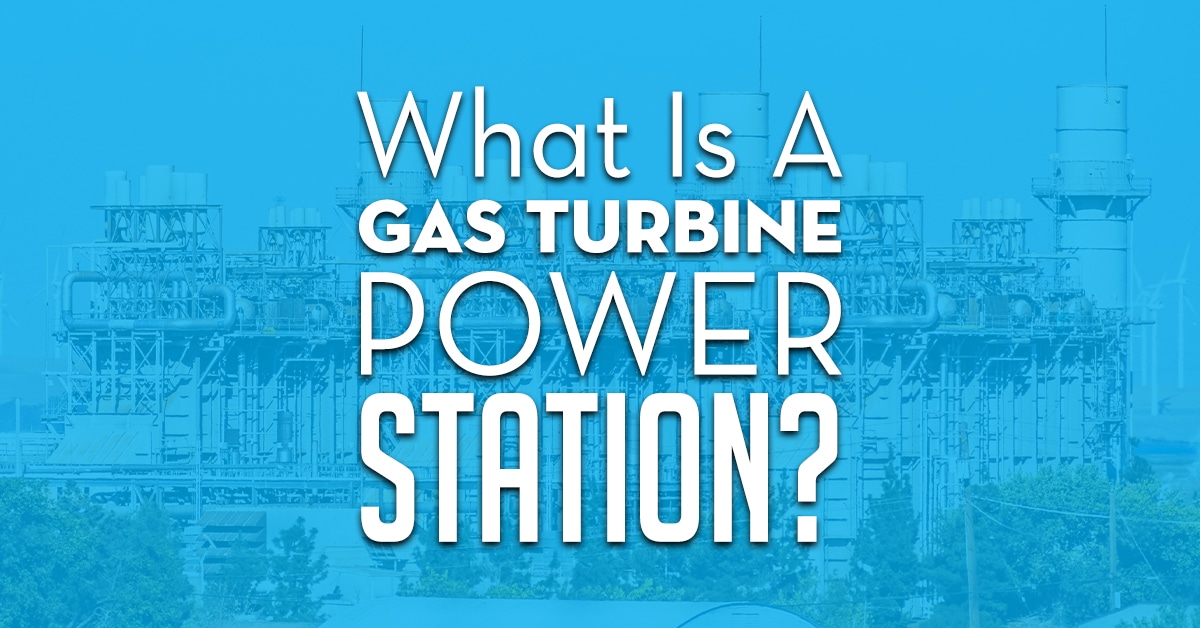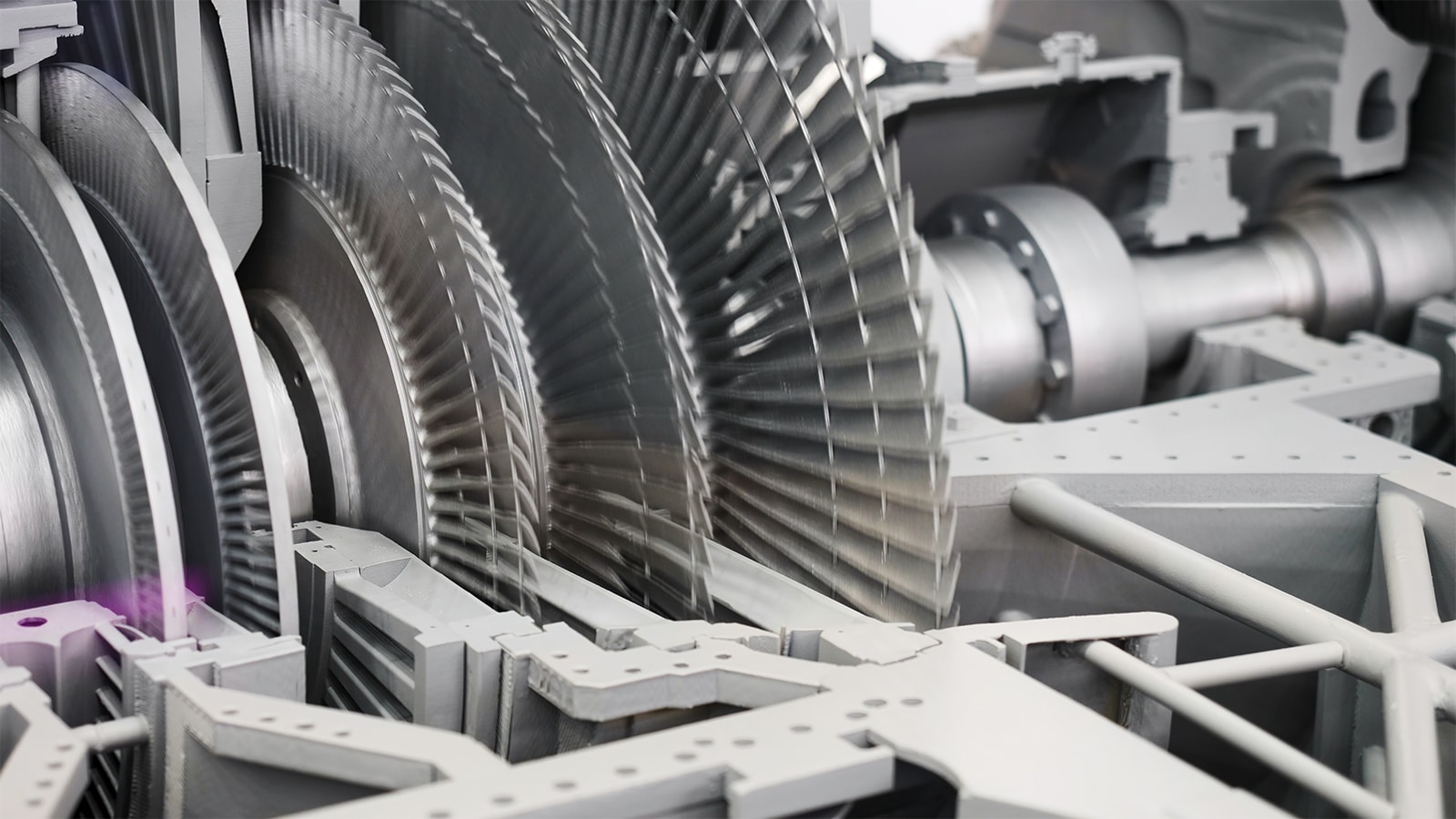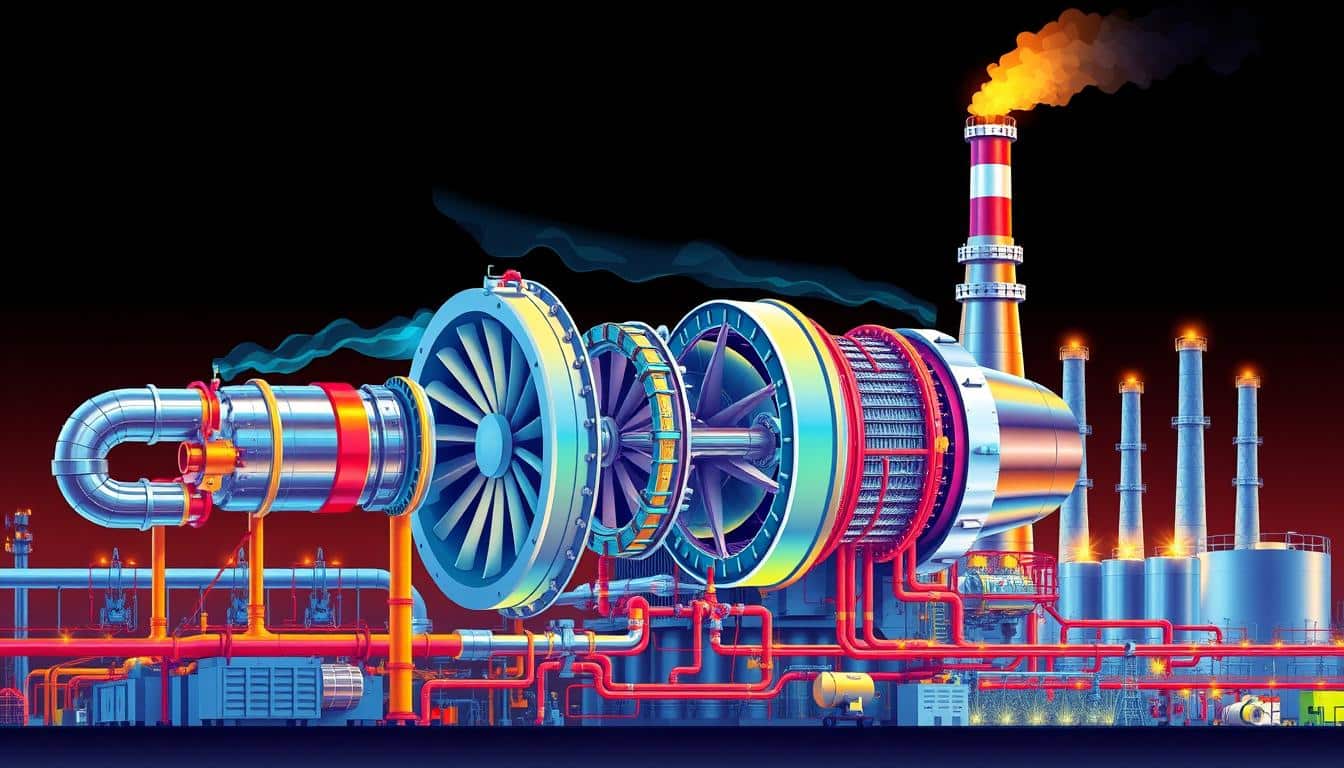
A gas turbine power station is a thermal power plant that uses natural gas to produce electricity. These plants are vital for meeting global energy needs, with gas-fired plants accounting for nearly 25% of electricity worldwide. The key parts of a gas turbine include a compressor, combustion system, and turbine section. Together, they convert natural gas’s chemical energy into electrical energy.
Gas turbine power stations vary in design, from simple cycle to combined cycle systems. Simple cycle turbines generate 100 to 400 megawatts of power, with efficiencies between 35-40%. Combined cycle gas turbine (CCGT) plants, by contrast, can reach up to 60% efficiency by utilizing waste heat. These plants range from small, portable units to large systems producing hundreds of megawatts.
Despite their efficiency, gas-fired plants are major contributors to greenhouse gas emissions. Efficient gas-fired plants emit around 450 grams of CO2 per kilowatt-hour. Simple-cycle turbines can emit up to 670 grams of CO2 per kWh. As the world moves towards cleaner energy, gas turbine power stations’ roles may change. Some may be retired for their inability to flexibly meet demand. Yet, in areas without carbon pricing, existing gas-fired plants remain profitable due to low natural gas prices and their ability to provide reliable power.
Key Takeaways
- Gas turbine power stations generate nearly 25% of the world’s electricity
- Simple cycle gas turbines have thermal efficiency rates of 35-40%
- Combined cycle gas turbine (CCGT) plants can achieve efficiencies up to 60%
- Gas-fired power plants are significant sources of greenhouse gas emissions
- The role of gas turbine power stations may evolve as the world shifts towards cleaner energy sources
How Gas Turbine Power Stations Generate Electricity
Gas turbine power stations convert natural gas energy into electricity. The process involves three key components: the compressor, combustion system, and turbine section. These elements transform the fuel’s chemical energy into mechanical energy. This energy then powers an electrical generator.
The compressor starts by drawing in ambient air and pressurizing it. This air compression is vital for efficient combustion and power generation. The compressed air then enters the combustion chamber, where fuel injection occurs. Natural gas mixes with the compressed air and ignites, producing a high-temperature, high-pressure gas stream.
The Combustion System
Inside the combustion chamber, temperatures can soar up to 2,300 degrees Fahrenheit (1,260 degrees Celsius). Advanced materials and cooling methods enable the components to endure these extreme conditions. The Department of Energy has developed turbines that can handle inlet temperatures of up to 2,600 degrees Fahrenheit (1,427 degrees Celsius). This is nearly 300 degrees hotter than previous models, leading to increased efficiencies.
The Turbine Section
The hot, high-pressure gas expands through the turbine section. This expansion causes the turbine blades to rotate at high speeds. The shaft rotation drives the compressor and spins the electrical generator, producing electricity. The efficiency of this process varies by gas turbine type. Simple cycle gas turbines have efficiencies between 20 and 35 percent. Advanced turbines can reach efficiencies of up to 60 percent.
Gas turbine power stations have several benefits. They have relatively low operational costs due to low gas production costs and reduced downtime. When running on natural gas, gas turbines also produce less exhaust gas pollution than internal combustion engines. This is because they use excess air for more complete combustion.
Types of Gas Turbine Power Stations
Gas turbine power stations vary in design to fulfill different power generation needs. The main types are heavy frame engines and aeroderivative engines, both for land-based applications.
Heavy Frame Gas Turbines
Heavy frame gas turbines are large and operate at lower pressure ratios, usually under 20. They are built for high power output, reaching up to 600 MW. These engines are widely used in power generation and industrial settings, like petrochemical plants and oil refineries.
Aeroderivative Gas Turbines
Aeroderivative engines, based on jet engines, are compact and work at high compression ratios, often over 30. They are designed for mobility and used mainly in aircraft, marine, and mobile power generation. Smaller aeroderivative engines can produce around 5 MW, ideal for mobile electricity needs.
Combined Cycle Gas Turbine (CCGT) Power Plants
CCGT power plants use a gas turbine followed by a heat recovery steam generator and a steam turbine. The gas turbine’s exhaust heats up to generate steam, which powers an additional steam turbine. This setup can produce up to 400 MW, with 200 MW from the steam turbines, and reaches efficiencies of 64%.
Gas turbine power stations offer quick startup times, from 10 to 20 minutes. They also need less water than traditional steam plants, making them suitable for areas with limited water resources.
Discover our article on 5 Differences Between Steam and Gas Turbines!
Advantages and Efficiency of Gas Turbine Power Stations
Gas turbine power stations boast high power-to-weight ratios and quick start-up times. They are versatile, fitting into various roles like aircraft, ships, and emergency backup systems. Their ability to run on different fuels, such as natural gas and diesel, makes them adaptable to changing fuel prices and availability.
High Operating Temperatures and Efficiency
The efficiency of gas turbines is greatly enhanced by their high operating temperatures. Thanks to advanced materials and cooling systems, turbine inlet temperatures can hit 2600°F (1427°C). This leads to thermal efficiencies of up to 60%. In combined cycle plants, where gas turbines are paired with steam turbines, temperatures in the combustion chamber can soar to about 1700°C. This boosts overall efficiency even further.
Combined cycle power plants achieve energy conversion efficiencies of 55-60%. This is a significant leap from the 35-45% efficiency of traditional thermal plants. Such high efficiency means less fuel is needed, resulting in lower emissions per unit of electricity produced.
Waste Heat Recovery Methods
Gas turbines use several methods to recover waste heat, boosting overall efficiency. Recuperators and heat recovery steam generators (HRSG) are key tools in this effort. Simple cycle gas turbines can reach efficiencies of 20-35%. Future combined cycle plants, with even higher temperatures, could hit 60% or more. Capturing waste heat for other uses could push overall efficiency to an impressive 80%.
Yet, gas turbines have their drawbacks. Efficiency declines at part load, leading to higher fuel use and costs. The initial investment and ongoing maintenance can also be costly, potentially leading to downtime.
Conclusion
Gas turbine power generation is essential for global electricity production, providing a flexible and efficient solution to rising energy demands. These power stations can quickly adjust their output, making them perfect for balancing variable renewable energy sources. Compared to coal-fired plants, gas turbines emit fewer pollutants due to their design, which uses extra air for combustion.
Technological advancements have greatly improved the efficiency and performance of gas turbine power plants. Modern heavy-frame gas turbines operate with pressure ratios under 20, while aero-derivative engines achieve compression ratios exceeding 30. Despite the high temperatures of up to 2500 degrees Fahrenheit in the turbine, advanced materials and cooling methods allow key components to withstand temperatures between 1500 and 1700 degrees Fahrenheit. Large gas turbine units typically operate with turbine-inlet temperatures ranging from 980° to 1,260° C, contributing to their improved efficiency.
Gas turbine power facilities are known for their reliability, minimal operational failure, and less frequent maintenance needs. Continuous data collection through sensors enables the monitoring of multiple variables, facilitating the identification of different operating modes over time. Proper maintenance practices, such as periodic inspections, oil analysis, temperature monitoring, and component alignment and balancing, are essential for optimizing performance and extending the service life of gas turbines. Upgrades focused on individual components, cooling systems, and advanced materials further enhance the efficiency and longevity of these power generation units.
While gas turbine power stations offer numerous advantages, they do contribute to greenhouse gas emissions. As the world moves towards a more sustainable future, the increased use of hydrogen fuel and the implementation of carbon capture technologies may help mitigate the environmental impact of gas-fired power plants. By embracing these advancements and prioritizing effective maintenance and upgrades, gas turbine power generation can continue to play a significant role in meeting global electricity needs while minimizing its carbon footprint.
FAQ
What is a gas turbine power station?
A gas turbine power station is a thermal plant that uses natural gas to produce electricity. It includes a compressor, combustion system, and turbine section. These turbines can operate in simple or combined cycles. They vary in size, from small mobile plants to large, complex systems.
How do gas turbine power stations generate electricity?
In a gas turbine power station, the compressor draws in air, pressurizes it, and sends it to the combustion chamber. Fuel injectors then add fuel to the air, creating a high-temperature gas. This gas expands through the turbine, driving the compressor and a generator to produce electricity.
What are the different types of gas turbine power stations?
Land-based gas turbines are divided into heavy frame and aeroderivative engines. Heavy frames have lower pressure ratios and are larger. Aeroderivative engines, based on jet engines, operate at high compression ratios and are more compact. Combined cycle gas turbines (CCGT) achieve higher efficiencies by adding a heat recovery steam generatorand steam turbine.
What factors contribute to the efficiency of gas turbine power stations?
Higher operating temperatures improve fuel-to-power efficiency in gas turbines. Advanced cooling technologies and materials have raised turbine inlet temperatures to 2600°F. This has led to efficiencies up to 60%. Waste heat recovery methods, like recuperators and heat recovery steam generators, also increase efficiency.
What role do gas turbine power stations play in global electricity generation?
Gas turbine power stations are key in global electricity generation. They offer flexibility and lower emissions than coal. Advances in design, materials, and cooling have increased their efficiency. This makes them a vital part of the global energy mix.

